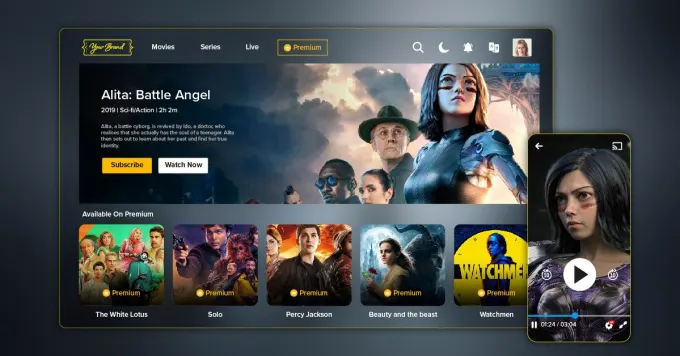Exploring the Impact of Streaming Services on Bollywood and Hollywood
Exploring the Impact of Streaming Services on Bollywood and Hollywood

Exploring the Impact of Streaming Services on Bollywood and Hollywood
The rise of streaming services has transformed the landscape of the film industry, influencing how movies are produced, distributed, and consumed. Platforms like Netflix, Amazon Prime Video, and Disney+ have become pivotal in both Bollywood and Hollywood, reshaping viewer expectations and industry standards. This article examines seven key impacts of streaming services on these two major film industries.
1. Changing Distribution Models
Streaming services have revolutionized the distribution of films, allowing for immediate access to a vast library of content. Traditional theatrical releases are no longer the only path to audiences; many films, particularly smaller indie projects, can find success through digital platforms. This shift has opened up new avenues for filmmakers in both Bollywood and Hollywood, allowing them to reach global audiences without the constraints of conventional distribution.
2. Expanding Global Reach
With streaming platforms, Bollywood films are now more accessible to international audiences. Similarly, Hollywood movies reach viewers across the globe instantly. This globalization of content allows for cultural exchange and has introduced diverse storytelling styles to new markets. As a result, both industries are increasingly producing content that appeals to a wider audience, often incorporating cross-cultural themes and collaborations.
3. Changing Viewer Behavior
The convenience of streaming has altered how audiences engage with films. Viewers now prefer on-demand content, leading to binge-watching habits that challenge traditional film release strategies. This has prompted filmmakers to create more engaging, episodic content that keeps viewers invested over longer periods. Both Bollywood and Hollywood are adapting by developing series and mini-series alongside traditional films to cater to changing preferences.
4. Increased Competition and Quality
The proliferation of streaming services has intensified competition within the film industry, pushing creators to elevate their production quality. In both Bollywood and Hollywood, platforms are investing heavily in original content, resulting in higher budgets and production values. This competition has led to innovative storytelling and exceptional performances, as filmmakers strive to stand out in a crowded marketplace.
5. Shifting Genre Preferences
Streaming platforms provide data insights that allow creators to understand viewer preferences better. As a result, there’s been a noticeable shift in the types of genres that dominate both Bollywood and Hollywood. For instance, genres like horror, sci-fi, and documentaries have gained popularity as platforms experiment with diverse content to cater to evolving tastes. This trend encourages filmmakers to explore new themes and narratives that might have been overlooked in traditional cinema.
6. Opportunities for Emerging Talent
Streaming services have democratized access to the film industry, providing opportunities for emerging talent in both Bollywood and Hollywood. Independent filmmakers, actors, and writers can showcase their work on these platforms, often receiving recognition and success that may not have been possible through traditional routes. This influx of fresh voices and perspectives enriches the storytelling landscape, promoting innovation and diversity.
7. The Future of Theatrical Releases
While streaming has gained significant traction, it has also prompted discussions about the future of theatrical releases. The pandemic accelerated this conversation, leading to simultaneous releases of films on streaming platforms and in theaters. Both Bollywood and Hollywood must navigate the balance between theatrical experiences and streaming convenience, considering audience preferences and the evolving landscape of film consumption.
Conclusion
The impact of streaming services on Bollywood and Hollywood is profound and multifaceted. As these platforms continue to shape the film industry, they encourage innovation, inclusivity, and new storytelling formats. Both industries must adapt to these changes to thrive in an increasingly digital world, creating content that resonates with diverse audiences while embracing the opportunities presented by this new era of film consumption.

